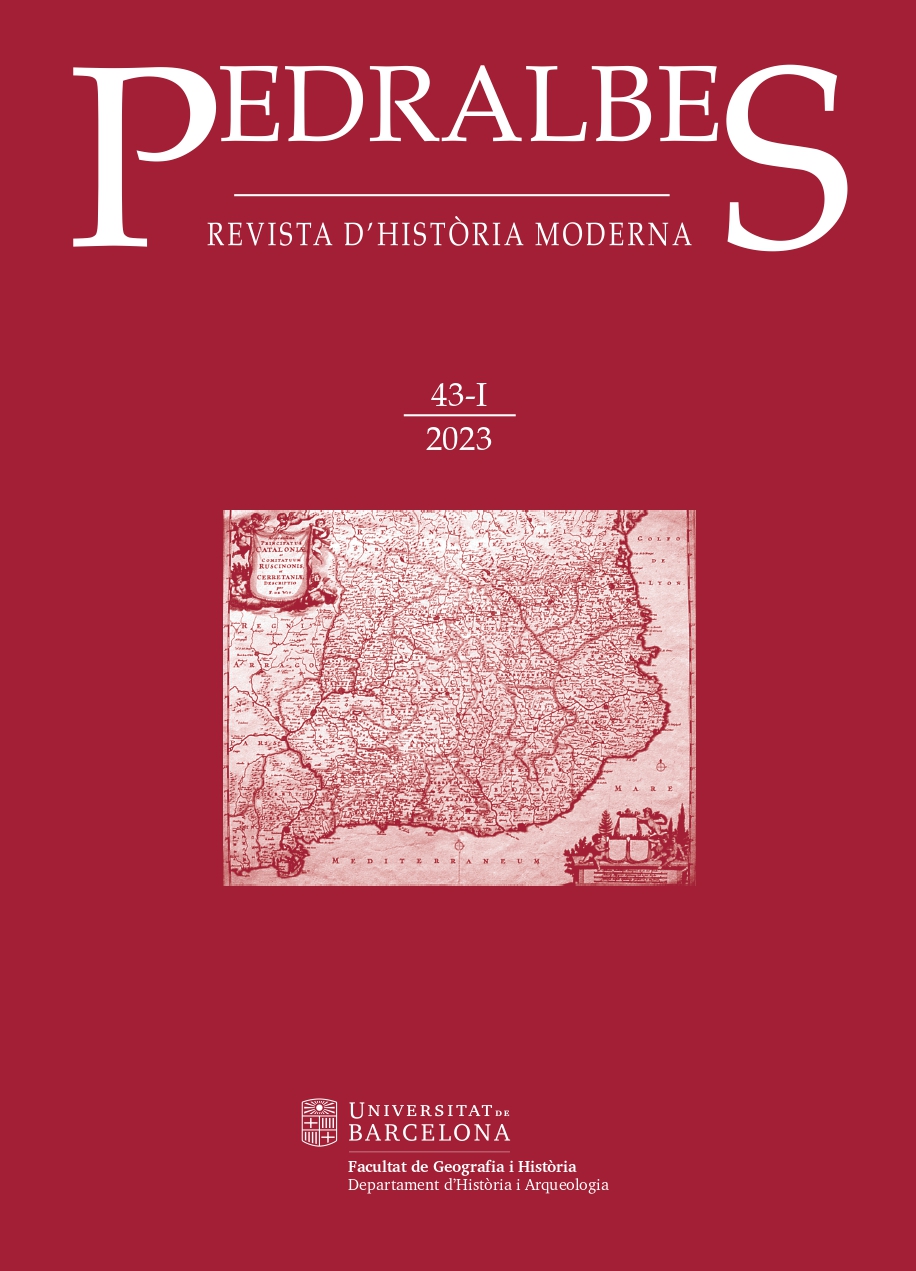La Corona de Aragón como escenario y fuente de disposición de monarquías compuestas
DOI:
https://doi.org/10.1344/pedralbes2023.43-1.3Keywords:
Crown of Aragon, Consejo de Italia, Consejo de Aragón, form of equal and primary union, composite monarchyAbstract
The Crown of Arago as a setting and source for the arrangement of composite monarchies
The plural and coordinated composition of the Crown of Aragon is explained by its historical trajectory. It began on the Iberian Peninsula through a matrimonial union (1150) and expanded into lands conquered from the Muslims, which became new realms not subordinate to the foundational ones. Unable to further expand its dominions on the peninsula, it had to expand into the Mediterranean, but by adding three kingdoms (Sicily, Sardinia, and Naples, between 1283 and 1442) endowed with their own rules, institutions, languages, and cultures. This contributed to perfecting its structure in terms of primary equality among its members, overseen by a well-organized Supreme Council that managed to maintain this arrangement from 1494 to 1707. The Spanish War of Succession had a significant impact on the location of the Crown of Aragon’s realms, as they became integrated into that of Castile.
Hence, it is described this transition from a composite monarchy based on primary equality to a monarchy where an accessory subordination prevails, which is dominant in Castile. Furthermore, it is detailed the role in this transition of various key figures, especially that of the Consejo de Aragón.
Downloads
Published
How to Cite
Issue
Section
License
Copyright (c) 2023 Jon Arrieta Alberdi

This work is licensed under a Creative Commons Attribution 4.0 International License.
Authors must agree with the following terms:
1. The author keeps authorship rights, ceding the journal the right to first publication.
2. Texts will be disseminated with a Creative Commons Attribution 4.0 International License. Which allows for the work to be shared with third parties, as long as they recognise the work’s authorship, the original publication in the journal and licensing conditions.
This requires acknowledging authorship appropriately, providing a link to the license, and indicating if any changes have been made. It can be indicated in any reasonable way, but not in a manner that suggests the licensor endorses or sponsors the use of the text.
If content is remixed, transformed, or new content is created from the journal's texts, it must be distributed under the same license as the original text



